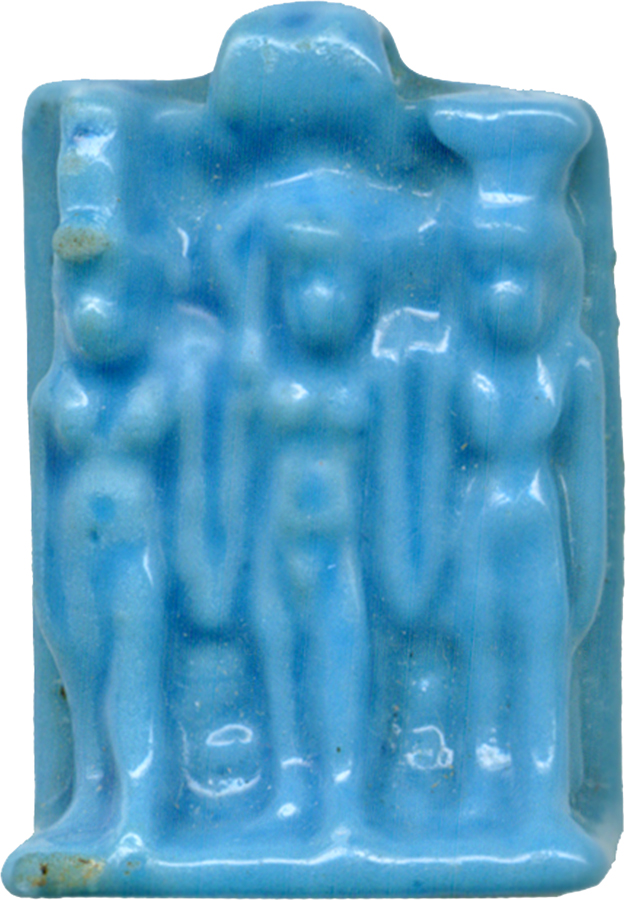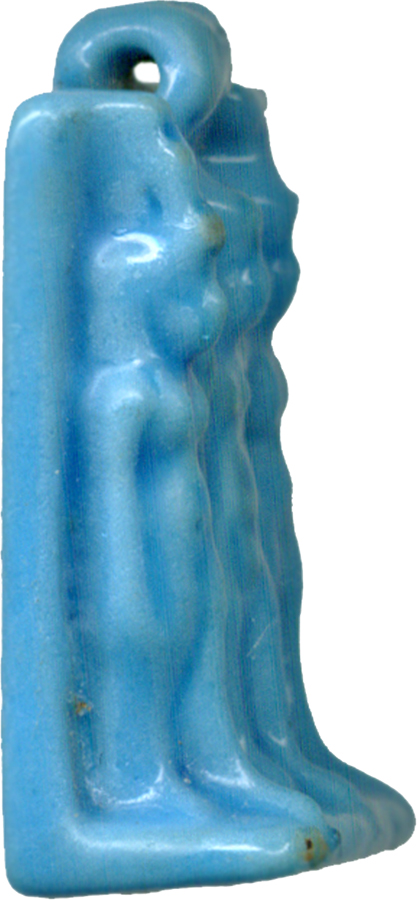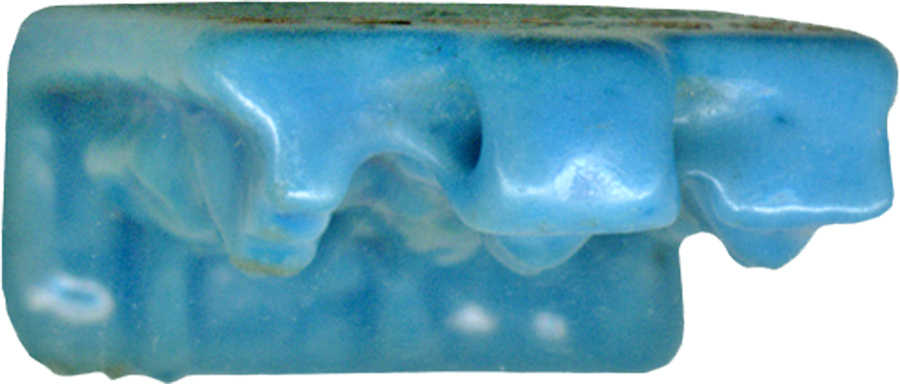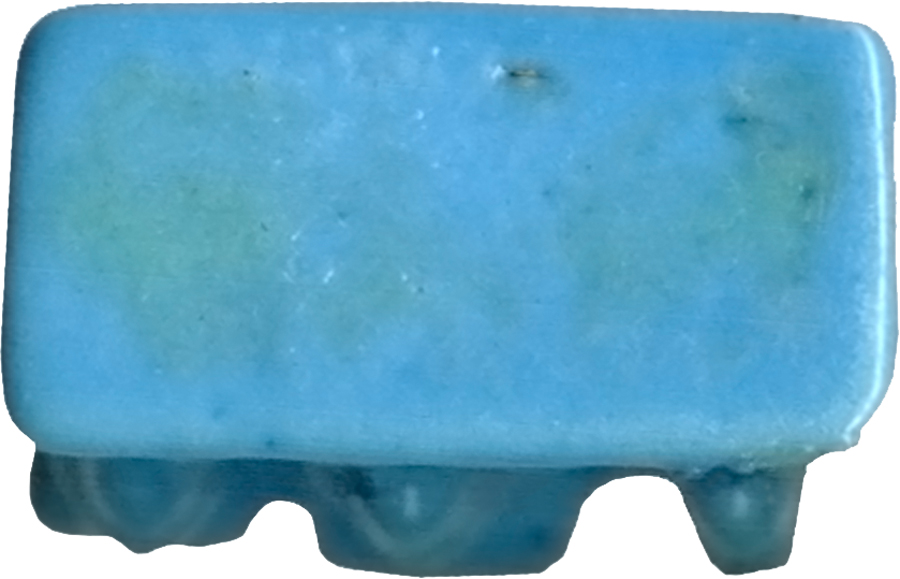Triad of Isis, Horus and Nephthys
(Ancient Egypt and Nubia )
One of several light blue faience beads of crude workmanship. Because the beads appear to have been created in the same shop, they have been strung together. From left to right are Horus wearing a disk, two plaques with Horus-the-Child flanked by Isis and Nephthys, Thoth, Horus in double crown, Nephthys, Shu (god of the atmosphere), Nephthys, Horus with disk, Thoth, two plaques, Horus-the-Child between Nephthys and Isis, and Khnum. The figures are pierced at shoulder height through a back pillar against which they stand. The plaques have pierced flat bands protruding from them. Amulets such as these were an important part of funerary equipment and the position in which some of them were laid on the mummy suggests that they were thought of as jewelry.
Provenance
Provenance (from the French provenir, 'to come from/forth') is the chronology of the ownership, custody, or location of a historical object. Learn more about provenance at the Walters.
Henry Walters, Baltimore [date and mode of acquisition unknown]; Walters Art Museum, 1931, by bequest.
Conservation
| Date | Description | Narrative |
|---|---|---|
| 7/23/1959 | Treatment | cleaned |
| 8/3/1998 | Examination | examined for condition |
Geographies
Egypt (Place of Origin)
Measurements
H: 7/8 x W: 9/16 x D: 1/4 in. (2.26 x 1.4 x 0.58 cm)
Credit Line
Acquired by Henry Walters, by 1931
Location in Museum
Not on view
Accession Number
In libraries, galleries, museums, and archives, an accession number is a unique identifier assigned to each object in the collection.
In libraries, galleries, museums, and archives, an accession number is a unique identifier assigned to each object in the collection.
48.1678












